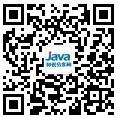| 失效链接处理 |
|
The Linux Command Line A Complete Introduction, 2nd Edition PDF 下载
本站整理下载:
相关截图:

主要内容:
What's In This Book
This material is presented in a carefully chosen sequence, much like a tutor sitting next to
you guiding you along. Many authors treat this material in a “systematic” fashion, which
makes sense from a writer’s perspective, but can be very confusing to new users.
Another goal is to acquaint you with the Unix way of thinking, which is different from
the Windows way of thinking. Along the way, we'll go on a few side trips to help you un-
derstand why certain things work the way they do and how they got that way. Linux is
not just a piece of software, it's also a small part of the larger Unix culture, which has its
own language and history. I might throw in a rant or two, as well.
This book is divided into four parts, each covering some aspect of the command line ex-
perience:
● Part 1 – Learning The Shell starts our exploration of the basic language of the
command line including such things as the structure of commands, file system
navigation, command line editing, and finding help and documentation for com-
mands.
● Part 2 – Configuration And The Environment covers editing configuration
files that control the computer's operation from the command line.
● Part 3 – Common Tasks And Essential Tools explores many of the ordinary
tasks that are commonly performed from the command line. Unix-like operating
systems, such as Linux, contain many “classic” command line programs that are
used to perform powerful operations on data.
● Part 4 – Writing Shell Scripts introduces shell programming, an admittedly
rudimentary, but easy to learn, technique for automating many common comput-
ing tasks. By learning shell programming, you will become familiar with concepts
that can be applied to many other programming languages.
How To Read This Book
Start at the beginning of the book and follow it to the end. It isn’t written as a reference
work, it's really more like a story with a beginning, middle, and an end.
xviii
Prerequisites
To use this book, all you will need is a working Linux installation. You can get this in one
of two ways:
1. Install Linux on a (not so new) computer. It doesn't matter which distribution
you choose, though most people today start out with either Ubuntu, Fedora, or
OpenSUSE. If in doubt, try Ubuntu first. Installing a modern Linux distribution
can be ridiculously easy or ridiculously difficult depending on your hardware. I
suggest a desktop computer that is a couple of years old and has at least 256
megabytes of RAM and 6 gigabytes of free hard disk space. Avoid laptops and
wireless networks if at all possible, as these are often more difficult to get work-
ing.
2. Use a “Live CD.” One of the cool things you can do with many Linux distribu-
tions is run them directly from a CDROM (or USB flash drive) without installing
them at all. Just go into your BIOS setup and set your computer to “Boot from
CDROM,” insert the live CD, and reboot. Using a live CD is a great way to test a
computer for Linux compatibility prior to installation. The disadvantage of using
a live CD is that it may be very slow compared to having Linux installed on your
hard drive. Both Ubuntu and Fedora (among others) have live CD versions.
Regardless of how you install Linux, you will need to have occasional superuser (i.e., ad-
ministrative) privileges to carry out the lessons in this book.
After you have a working installation, start reading and follow along with your own com-
puter. Most of the material in this book is “hands on,” so sit down and get typing!
Why I Don't Call It “GNU/Linux”
In some quarters, it's politically correct to call the Linux operating system the
“GNU/Linux operating system.” The problem with “Linux” is that there is no
completely correct way to name it because it was written by many different peo-
ple in a vast, distributed development effort. Technically speaking, Linux is the
name of the operating system's kernel, nothing more. The kernel is very important
of course, since it makes the operating system go, but it's not enough to form a
complete operating system.
Enter Richard Stallman, the genius-philosopher who founded the Free Software
movement, started the Free Software Foundation, formed the GNU Project, wrote
the first version of the GNU C Compiler (gcc), created the GNU General Public
License (the GPL), etc., etc., etc. He insists that you call it “GNU/Linux” to prop-
erly reflect the contributions of the GNU Project. While the GNU Project predates
the Linux kernel, and the project's contributions are extremely deserving of recog-
nition, placing them in the name is unfair to everyone else who made significant
xix
contributions. Besides, I think “Linux/GNU” would be more technically accurate
since the kernel boots first and everything else runs on top of it.
In popular usage, “Linux” refers to the kernel and all the other free and open
source software found in the typical Linux distribution; that is, the entire Linux
ecosystem, not just the GNU components. The operating system marketplace
seems to prefer one-word names such as DOS, Windows, Solaris, Irix, AIX. I
have chosen to use the popular format. If, however, you prefer to use
“GNU/Linux” instead, please perform a mental search-and-replace while reading
this book. I won't mind.
Acknowledgments
I want to thank the following people, who helped make this book possible:
Jenny Watson, Acquisitions Editor at Wiley Publishing who originally suggested that I
write a shell scripting book.
John C. Dvorak, noted columnist and pundit. In an episode of his video podcast, “Cranky
Geeks,” Mr. Dvorak described the process of writing: “Hell. Write 200 words a day and
in a year, you have a novel.” This advice led me to write a page a day until I had a book.
Dmitri Popov wrote an article in Free Software Magazine titled, “Creating a book tem-
plate with Writer,” which inspired me to use OpenOffice.org Writer for composing the
text. As it turned out, it worked wonderfully.
Mark Polesky performed an extraordinary review and test of the text.
Jesse Becker, Tomasz Chrzczonowicz, Michael Levin, Spence Miner also tested and re-
viewed portions of the text.
Karen M. Shotts contributed a lot of hours, polishing my so-called English by editing the
text.
And lastly, the readers of LinuxCommand.org, who have sent me so many kind emails.
Their encouragement gave me the idea that I was really on to something!
Your Feedback Is Needed!
This book is an ongoing project, like many open source software projects. If you find a
technical error, drop me a line at:
bshotts@users.sourceforge.net
Your changes and suggestions may get into future releases.
|




 苏公网安备 32061202001004号
苏公网安备 32061202001004号



